|
By Maurice Carter, Sustainable Newton President  When we think about climate change, fossil fuels, and carbon footprints, the first culprits most of us think about are the vehicles we drive. And those emissions are a big deal. That's why you're seeing so much activity around electric cars and trucks. But globally, according to Project Drawdown, 25% of the world's greenhouse gas emissions come from electricity generation. So, to achieve zero-emission transportation, we must also transform how we generate power to charge those vehicles, light/heat/cool our homes, and run our factories. In Georgia, ~66% of our electricity is still generated by plants burning fossil fuels (coal, oil, and natural gas) that create those emissions. The remainder comes from nuclear (26%) and renewables (9% -- primarily hydro and solar). Renewable energy -- primarily wind and solar -- gets most of the press. But there's really more to it. Cost overruns and schedule delays with the additional reactors at Plant Vogtle reflect how difficult it is to scale quickly with nuclear. But, until battery storage can be deployed at massive scale, the intermittent generation characteristics of wind and solar mean we need other options. In fact, Project Drawdown has identified, analyzed, and quantified 32 different climate solutions in the Electricity Sector as part of our overall carbon reduction plan. Understanding them all can get pretty mind-boggling! University researchers and public policy experts in our state have banded together though Drawdown Georgia to narrow our climate focus to just 20 solutions with the greatest practical impact in Georgia over the coming decade (by 2030). And five of those are in the Electricity Sector. The sun shines brightly most days in Georgia, which is why both Rooftop Solar and Large-Scale (Utility) Solar are among the list of five. On the other hand, our hilly terrain makes on-shore wind farms non-viable here. The other three Electricity Sector solutions prioritized by Drawdown Georgia are less familiar to most of us:
I recently spent time learning about Cogeneration through conversations with a local industry interested in using Combined Heat and Power (CHP -- a form of Cogeneration) to reduce greenhouse gas emissions from their manufacturing process. Those conversations included a meeting with a leading CHP expert, Marilyn Brown, at Georgia Tech’s School of Public Policy, who recently published extensive research on the current state and future potential for CHP in Georgia. Dr. Brown is also a member of the core research team for Drawdown Georgia. When I first heard about the project being considered locally and learned it would use natural gas, I was skeptical about the carbon reduction benefits. But, since Cogeneration/CHP is a priority solution in the Drawdown Georgia framework, I was also open-minded and curious. Both the US Department of Energy (DOE) and the US Environmental Protection Agency (EPA) promote CHP as an energy efficiency measure and a way to lower greenhouse gas emissions/reduce environmental impacts. On its website, the EPA provides an easy to follow explanation of the benefits from CHP, and the DOE offers technical assistance for installations through its Better Buildings program. In the future, CHP can potentially be fueled by an emissions-free energy source like hydrogen. But today most systems burn either natural gas or bio-mass left over from the industrial process. Still, even with a fossil fuel energy source, the graphic below from the EPA shows how a CHP system results in lower carbon emissions than a traditional scenario where natural gas is burned separately to power both steam boilers and electricity generation at a power plant somewhere else. Reduced emissions are achieved through several factors:
Also from her team's research: If Georgia added CHP systems to the 9,374 sites that are suitable for cogeneration, it could reduce carbon emissions in Georgia by 13%. Bringing CHP to just 34 of Georgia’s industrial plants, each with 25 megawatts of electricity capacity, could reduce greenhouse gas emissions by 2%. The study authors, using modeling tools they developed, note that this “achievable” level of CHP adoption could add 2,000 jobs to the state; full deployment could support 13,000 new jobs. So, while solar has a sunny future in Georgia, less familiar solutions like Cogeneration, Landfill Methane, and Demand Response are an equally important part of the climate solution mix. We know from science how crucial it is to reach net-zero emissions by 2050. We have a lot of eggs to carry and will need every basket we can find.
0 Comments
By Maurice Carter, Sustainable Newton President  Anyone living or working in Newton County has until November 30 (tomorrow) to view and comment on the county's Transit Master Plan, which we encourage you to do here. As a climate activist, I support public transportation as a critical investment to lower greenhouse gas emissions. Scientists working on Drawdown Georgia estimate 43% of our state's carbon emissions come from vehicles on our roadways, which is why they've pegged Mass Transit as one of five Transportation Sector climate solutions for Georgia. But my inspiration is far more personal. It's rooted in a promise I made to a friend before she died. I'd known Vivian Harris when my wife served as Covington's Mayor from 2008-2011, but I hadn't seen her for years when I happened to attend a meeting Vivian instigated in 2015 for local citizens seeking to establish public transportation in Newton County.
By Maurice Carter, Sustainable Newton President
“It ought to be remembered that there is nothing more difficult to take in hand, more perilous to conduct, or more uncertain in its success, than to take the lead in the introduction of a new order of things. Because the innovator has for enemies all those who have done well under the old conditions, and lukewarm defenders in those who may do well under the new." 
Niccolò Machiavelli's words from his 1532 work, The Prince, have never rang more true than now. Just ask President Joe Biden, whose climate agenda and proposed clean energy policies are the largest "new order of things" we've seen in America in our lifetimes. For the world, decarbonizing economies to respond to the climate crisis -- as agreed via the Paris Climate Agreement -- is likely the largest single undertaking in human history.
Stop in the Name of Love (of Money) By opposing President Biden's Clean Electricity Performance Program (CEPP), Sen. Joe Manchin (D-WV) casts himself as the visible face of the enemies Machiavelli noted. Manchin is doing very well under the current order of things through the backing of the coal, oil, and gas interests who have done extremely well themselves for decades. By Maurice Carter, Sustainable Newton President 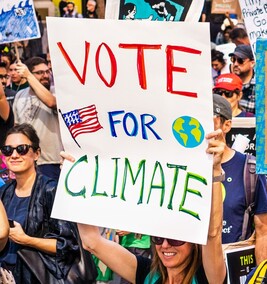 Across Newton County cities, one mayoral and 14 city council terms expire at year end. But only two seats -- Covington's East Ward Post 1 and West Ward Post 2 -- have contested races in November. The other openings will be filled in January by candidates who qualified unopposed. Prior to advanced, in-person voting beginning October 12, Sustainable Newton invited the two Covington East Ward and two West Ward candidates to chat with us about climate change, sustainability, and their positions on issues such as rooftop and utility-scale solar and the adoption of electric vehicles. We offered to send questions a week in advance and record each interview at the candidate's convenience without a live audience. You can read our questions here. East Ward Post 1 incumbent council member Susie Keck and West Ward Post 2 candidate Scotty Scoggins accepted our invitation. You will find recordings of those conversations below.
By Maurice Carter, Sustainable Newton President 
On June 1, 2021, President Joe Biden issued an executive order temporarily suspending oil and gas drilling leases for the Arctic National Wildlife Refuge (ANWR) in Alaska. The controversial leasing program was finalized in August 2020 during President Donald Trump's final year in office.
President Biden's order cited "legal deficiencies" with the current program and "inadequacy" of the previous review process. As a result, the US Department of the Interior is initiating a "comprehensive environmental analysis to review the potential impacts of the Program and to address legal deficiencies in the current leasing program’s environmental review." That review will include public comments and testimony, starting with six sessions this week. On September 14, at the invitation of Environment America and representing Sustainable Newton, I delivered virtual testimony before the Federal Bureau of Land Management Alaska Field Office. You can read the text of my verbal testimony here. You can also view the presentation from the bureau and listen to all of yesterday's testimony in the Facebook Live video below. (My testimony begins at the 28:04 mark.) By Maurice Carter, Sustainable Newton President "I wish it need not have happened in my time," said Frodo. "So do I," said Gandalf, "and so do all who live to see such times. But that is not for them to decide. All we have to decide is what to do with the time that is given to us." Scientists tell us everyday: there have never been times such as these:
By Maurice Carter, Sustainable Newton President  In regularly scheduled meetings Monday night, the city councils of Covington and Oxford each voted to approve solar power purchase contracts (SPPCs) with the Municipal Electric Association of Georgia (MEAG). Covington will purchase up to 15 megawatts (MW) of solar capacity through MEAG's 80 MW solar initiative scheduled to come online in 2023. Oxford will commit to 4 MW. This initiative marks the first time MEAG has included a utility-scale solar offering in its power portfolio. The association -- which serves 49 municipal electric companies in Georgia -- will contract with a third party vendor to construct and operate an 80 MW solar farm in south Georgia. MEAG will resell the solar-sourced electricity (and associated renewable energy credits) to cities participating in the project. The actual capacity Covington and Oxford receive will depend on the total purchase commitments received from all eligible municipal electric companies. If requests exceed the 80 MW capacity of the project, then each interested city will receive a reduced allocation based on their percentage of the total requested. In presenting the MEAG proposal to City Council Monday night, Covington Electric Director Joel Smith positioned the solar opportunity as an important step for achieving the city's goal of 90% emissions-free electricity by 2045. According to Smith, Covington plans sell the new solar capacity exclusively to large industrial customers via a Renewable Energy Customer Agreement (RECA), giving those large customers the opportunity to meet sustainability objectives and comply with corporate mandates. One existing Covington customer has already expressed interest in purchasing 50% of Covington's solar capacity under the agreement. Oxford plans to add the additional electricity to their grid, serving all customers. Sustainable Newton supporters may recall our MEAG cities (Covington, Oxford, and Mansfield) posed special challenges during our 2019-20 Solarize Newton-Morgan campaign -- due to the standby capacity fee MEAG encouraged those cities to adopt as a hedge against revenue loss from rooftop solar. The Oxford City Council ultimately voted to rescind their standby fee, and Covington voted to reduce (but not eliminate) theirs. In 2019, MEAG had no publicly announced plans for a solar, and you could not even find the word "solar" anywhere on their website. These solar power purchase contracts with MEAG are a very big step forward in just two short years. Sustainable Newton remains committed to working with local officials in each of our cities to remove barriers to rooftop solar and to even provide incentives (such as net metering, time of use rate plans, etc.). But, rooftop solar alone will not reduce greenhouse gas emission sufficiently to address the climate crisis. We've aligned our climate action plans with Drawdown Georgia, and utility-scale solar is a big part of that plan. For the Electricity solution sector, Drawdown Georgia has set the following statewide targets for 2030:
During our solarize campaign, consultants estimated the 85 kW of rooftop solar installed through the campaign would mean 159,460 pounds less carbon being emitted into the atmosphere each year. Extrapolating that formula, 19 MW of utility-scale solar will result in roughly 35.6 million pounds (or 16,202 metric tons) less carbon emissions annually from electricity generation for our two cities. This stuff adds up! We are grateful to MEAG for taking this important initiative and proud of our elected officials and city staffs in Covington and Oxford for stepping up in a big way! May this only be the beginning of even bigger things to come!! By Theodosia Wade, Former Sustainable Newton Board Member In March 2019, my husband Billy and I installed 12 solar panels on our roof as part of the Solarize Newton Morgan campaign. We were super excited to to reduce our carbon footprint, become a little more energy independent, and save money. Not only did the solarize campaign allow us to get better pricing on installation and materials, but it also did the leg work of choosing a reputable solar installer. We worked with folks who had already gone solar and others like us who were adding solar for the first time. It was a great experience.
Fast forward to today and we can look at the numbers to see how much electricity we're using and how much money we have saved over the last 2+ years. By Theodosia Wade, Past Sustainable Newton Board Member 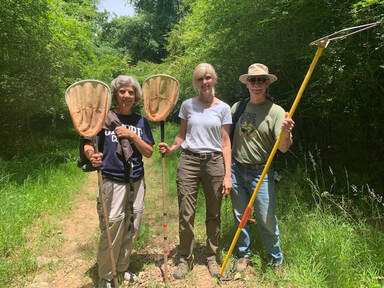 Who Doesn’t Love a Creek? Thanks to the City of Oxford’s Sustainability Committee, I had a chance to play in the creek again with the Stream Team of GA and folks from UGA’s Warnell School of Forestry and Natural Resources. Since retiring, I really miss that part of teaching of Environmental Science at Oxford College, so it was a real treat for me to get my feet wet and my hands slimy. On Saturday, we sampled a stretch of Dried Indian Creek behind the Oxford College Organic Farm to see how many different kinds of fish we could find. Using an electro-shocker, the team collected fish from horny head chub to yellow fin shiners -- even a few salamanders. No worries though, it was all catch and release with 0% fish mortality. What a beautiful array of fish, many in their brilliant breeding colors.
By Sustainable Newton
By Mike McQuaide, Sustainable Newton Board Member
We celebrate Arbor Day in Georgia in February (on the 3rd Friday), when weather conditions are best for planting trees. This year, many communities are scaling back or canceling celebrations dues to COVID-19. So, we asked board member Mike McQuaide to reflect on his love of trees. 
One year into the COVID-19 pandemic, many people have had occasion to focus more clearly on the features of life they value the most. The adage “you don’t miss your water until your well runs dry” is certainly applicable at this moment in American history. Being with friends and family indoors, going into restaurants and stores, freely traveling to distant places, and the many dimensions of life are suspended to some extent right now. Many of us find it insightful to step back and consider more deeply the features of life that we have taken for granted --but now seem out of reach-- at least for the time being.
Broadening our appreciation of the world we take for granted can bring a renewed appreciation and desire to protect the natural world. The natural environment is complex and diverse; one visible aspect of the natural world are the trees around us. Arbor Day provides an opportunity to step back and consider the many benefits of trees in our shared communities. The most visibly obvious benefits being the aesthetic advantages of trees. On a subconscious level, trees can evoke our sense of beauty. Office workers with a view of trees are more productive than those in windowless workplaces. Seeing trees can reduce our blood pressure and help our muscles to relax.
By Maurice Carter, Sustainable Newton President 
Extreme weather and widespread power outages in Texas are headline news everywhere this week. As of today, nearly three million customers remain without power, after record-breaking low temperatures and heavy snowfall struck the state. It's a dangerous situation, and many of us have friends and/or family directly impacted.
Emotions are frayed and lives remain at risk. As with any crisis, priority one is restoring power and tending to those in need. Lessons learned can wait until safety is restored. But it's a sad reality we must also contend with disinformation about root causes and contributing factors to the energy portion of this crisis. Specifically, some clean energy naysayers see an opportunity to push a false narrative that these power outages were primarily caused by a wind power failure. This simply is not true.
By Maurice Carter, Sustainable Newton President 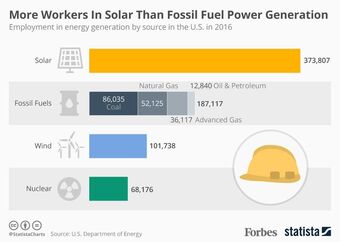
Wednesday in Washington brought a flurry of environmental executive orders and policy statements from President Biden that delighted environmentalists and climate activists -- while also drawing fire from Republicans seeking to use climate as a wedge issue. Among the most significant actions the President announced, he:
By Maurice Carter, Sustainable Newton President 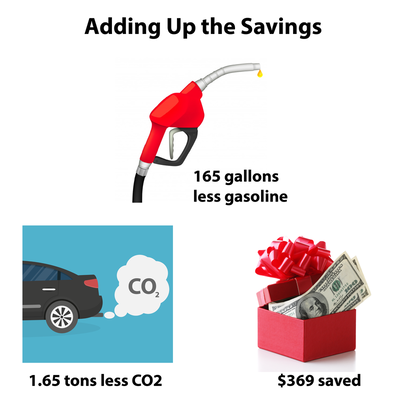 For our 2021 virtual kickoff Friday morning, we visited with Ray C. Anderson Foundation Executive Director John A. Lanier to discuss the Drawdown Georgia initiative. John gave us a hope-filled, inspiring look at the country's only state-centered climate action program. If you missed it, please take time to view the replay. Sustainable Newton is committed to doing all we can to promote the Drawdown Georgia effort and bring its 20 carbon-reduction solutions to households, businesses, and local governments in Newton County. Starting a new year is the perfect time to assess what personal changes I can make towards "bringing climate solutions home," as they say at Drawdown Georgia. Across the five key solution sectors (Electricity, Buildings and Materials, Food and Agriculture, Land Sinks, and Transportation), there are feasible actions we can each take to contribute to the overall 46 megaton carbon-reduction goal for the program. (Each megaton is one million tons.) By Maurice Carter, Sustainable Newton President 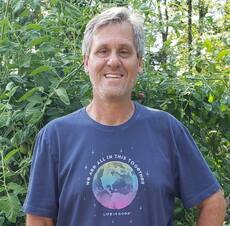 I remember vividly the last time I saw my fellow Sustainable Newton Board members in person, on the evening of March 9, gathered around a table in our usual meeting room at First Presbyterian Church of Covington. Three days earlier, 21 cases of COVID-19 had been confirmed on a cruise ship off the California coast, and the disease had reached a nursing home in Washington state. But the World Health Organization had yet to declare a pandemic. Still, I recall the awkward silence when a colleague sneezed several times. "Bless you," we said out loud, but our body language was a little more complicated. We adjourned at the end of the meeting without saying so, but I suspected we might not see each other again for a month or two. And, then, all Hell broke loose. |
Categories
All
Archives
February 2024
|
Photos from Chemist 4 U, shixart1985 (CC BY 2.0), Juhele_CZ, EarthLED, shixart1985, EcuaVoz, Chemist 4 U

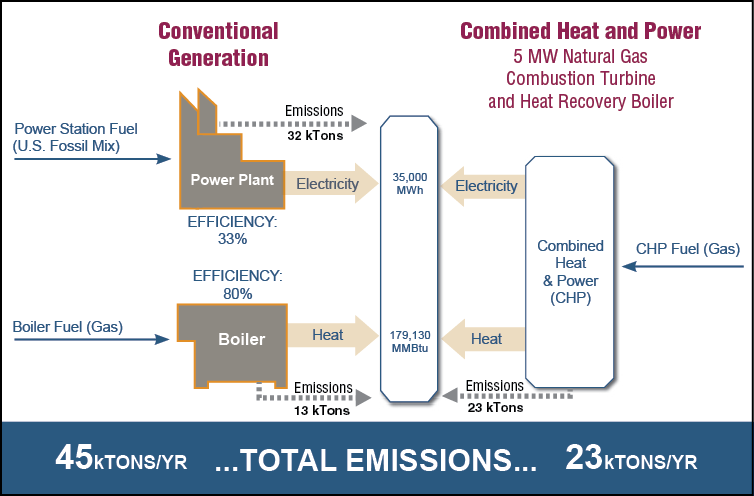

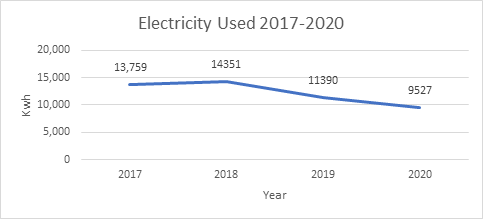

 RSS Feed
RSS Feed
